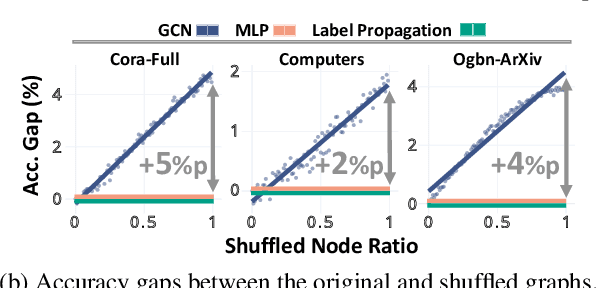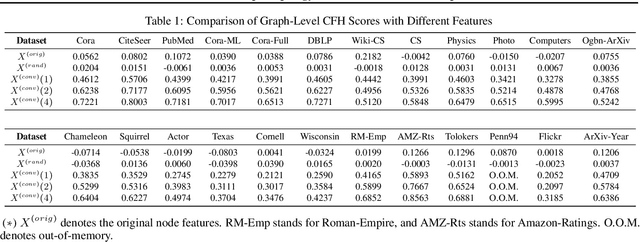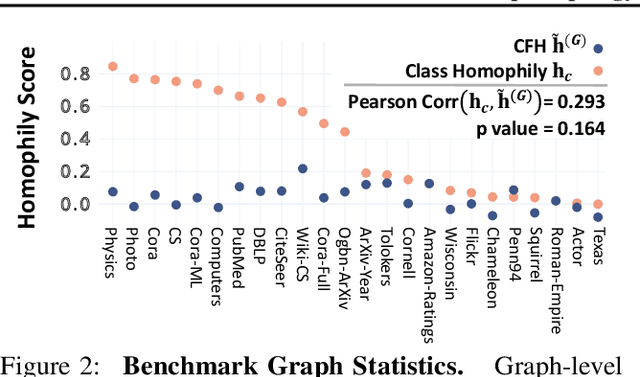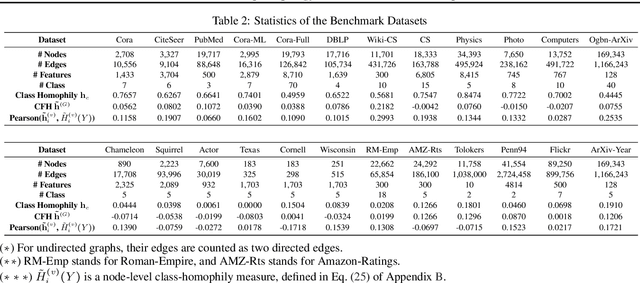Feature Distribution on Graph Topology Mediates the Effect of Graph Convolution: Homophily Perspective
Paper and Code
Feb 07, 2024



How would randomly shuffling feature vectors among nodes from the same class affect graph neural networks (GNNs)? The feature shuffle, intuitively, perturbs the dependence between graph topology and features (A-X dependence) for GNNs to learn from. Surprisingly, we observe a consistent and significant improvement in GNN performance following the feature shuffle. Having overlooked the impact of A-X dependence on GNNs, the prior literature does not provide a satisfactory understanding of the phenomenon. Thus, we raise two research questions. First, how should A-X dependence be measured, while controlling for potential confounds? Second, how does A-X dependence affect GNNs? In response, we (i) propose a principled measure for A-X dependence, (ii) design a random graph model that controls A-X dependence, (iii) establish a theory on how A-X dependence relates to graph convolution, and (iv) present empirical analysis on real-world graphs that aligns with the theory. We conclude that A-X dependence mediates the effect of graph convolution, such that smaller dependence improves GNN-based node classification.
 Add to Chrome
Add to Chrome Add to Firefox
Add to Firefox Add to Edge
Add to Edge